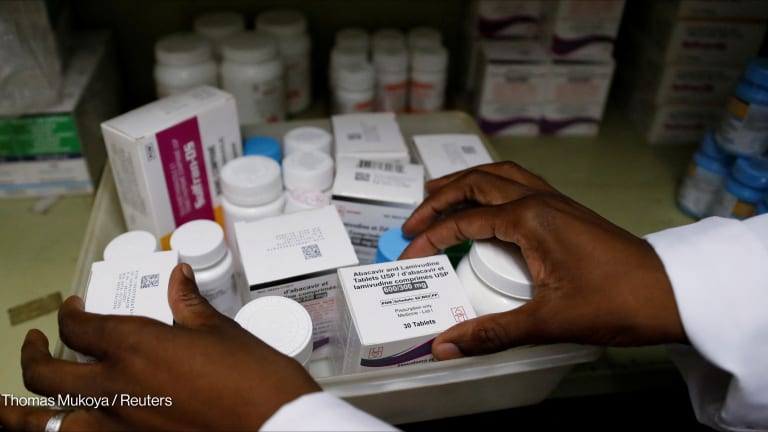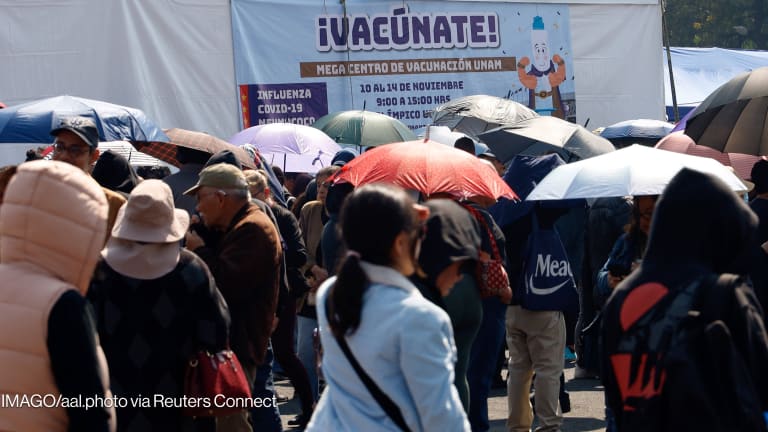
CANBERRA — Australian Indigenous development experts have welcomed the U.S. Agency for International Development’s new policy promoting the rights of Indigenous peoples. But they have said that an inclusive aid program putting Indigenous communities in control of programs targeting their needs will require an investment in capacity building.
“This is where experienced Indigenous development actors can play a valuable role — bridging the two worlds,” Rod Reeve, managing director at Ninti One, told Devex.
Ninti One, along with i2i Development Global, are two Indigenous-owned and operated organizations supporting Australia’s aid program — and both advocate an ‘Indigenous to Indigenous’ approach that brings shared values, culture, and history into programming. Aboriginal and Torres Strait Islander staff lead development work, engaging directly with Indigenous communities in the Pacific to support education, health, economic programs, and more.
While an Indigenous to Indigenous approach is not identified in USAID’s policy, the groundwork for it already exists in the Department of Foreign Affairs and Trade approach.
Australia’s Indigenous Procurement Policy has similarities to USAID’s set-asides which target minority-owned businesses for greater engagement in the aid program. The IPP has enabled Ninti One and i2i to establish themselves in the aid world — and demonstrate the impact of their approach. With the right support, they believe USAID could head in the same direction.
USAID hopes to go beyond 'risk management' with Indigenous peoples
USAID is rolling out a new Policy on Promoting the Rights of Indigenous Peoples. Devex speaks to Luis Felipe Duchicela, senior adviser for Indigenous peoples' issues, about the agency's "new paradigms" for engaging with Indigenous communities.
Darren Godwell, CEO at i2i, told Devex that “one of the operating principles of the U.S. is to identify systemic and cross-sectoral approaches faced by Indigenous peoples. This is already opening up the door and lending support to an increased Indigenous to Indigenous engagement within the aid program.”
Learning from Australia
Ninti One has been an important partner for DFAT as part of its transition to increased engagement with Indigenous suppliers in the aid program — both as principal contractors and subcontractors. But it has been a long road to get to where they are.
“From our experience, operating in this new space will mean that USAID may need to become comfortable with modest goal-setting over longer time frames, compared with its standard international development work,” Reeve said.
Among the challenges are the fact that Indigenous businesses do not have the resources behind them as leading development consultants to compete for work.
“Fledgling Indigenous businesses simply cannot compete with billion-dollar companies,” Reeve said. “Unless USAID provides a procurement mechanism that values and rewards the unique nature of Indigenous-to-Indigenous development, Indigenous people — who the aid is directed at — will be somewhat reliant on powerful non-Indigenous entities.”
An Indigenous to Indigenous approach, he explained, requires unfamiliar players collaborating, with the support of the donor and the partner government.
“It is an important approach in engaging minority Indigenous populations in countries with a poor rule of law and a history of struggling to participate in local developments.” And it is also important in building the capacity of partner Indigenous groups that will be engaging directly in programming and implementation.
“I expect that experienced Indigenous development actors may be required to help the Indigenous peoples to navigate through unfamiliar constructs like rapid designs and decision-making, political economies, hard deadlines, performance-based milestone payments, unfamiliar reporting regimens, and the donor’s risk management,” Reeve said.
“These are just a few examples of things that don’t naturally fit the longer-term characteristics of realizing the value of Indigenous rights, as described in the USAID policy paper.”
Monitoring and evaluation — with clear objectives to assess both the empowerment of Indigenous communities and audits of Indigenous participation — will be important to the successful implementation of the new policy.
“Unless USAID provides a procurement mechanism that values and rewards the unique nature of Indigenous-to-Indigenous development, Indigenous people — who the aid is directed at — will be somewhat reliant on powerful non-Indigenous entities.”
— Rod Reeve, managing director, Ninti One“Progress should be co-monitored through the lenses of the partner Indigenous groups,” Reeve said. “From our experience, success or failure of this policy relies on USAID overseeing the actual growth of empowered institutional capacities of Indigenous peoples as critical partners, and realizing the value of their own Indigenous expertise.”
With USAID’s policy, Indigenous development will make a bigger splash
While Godwell said Australia has been a leader in Indigenous development and procurement, he believes USAID will have the ability to influence other development organizations.
“If you have someone like USAID developing policies and standards on collaborating with Indigenous peoples, it helps shape the direction of the wider sector,” he said.
“There is a shift to safeguarding now — it is not enough to have ambition, you have to have a responsibility to safeguard. For Indigenous peoples, this means empowering Indigenous people as advocates, and enabling the practice of self-determination.”
For organizations such as DFAT, Godwell believes it can help “give comfort” that they have been heading in the right direction — and potentially see them take further steps to enhance leadership.
“There is a great opportunity for DFAT to engage Indigenous companies and subject matter experts to help the department co-design an implementation toolkit,” he said. “This can provide guidance on social impact assessments, inclusive development, and how consultation should be happening. It’s the next step in improving how development programs collaborate with Indigenous peoples.”
The Indo-Pacific region, where DFAT focuses its aid program and USAID are increasing its presence to counter China’s influence, Godwell is hopeful that both organizations can collaborate on programs putting Indigenous interests first.
“The return of USAID in the region, and as an ally of Australia, provides an opportunity to take advantage of the Indigenous to Indigenous capabilities Australian companies have to support those USAID objectives. And it’s an opportunity to provide practical examples of where USAID can be headed in their programming.”








